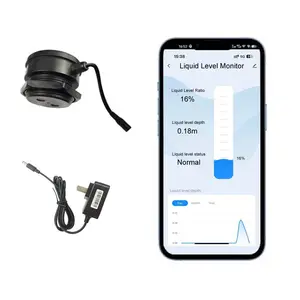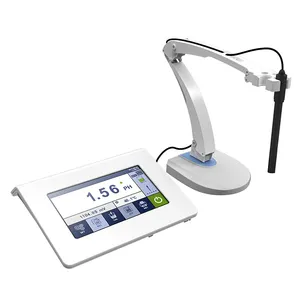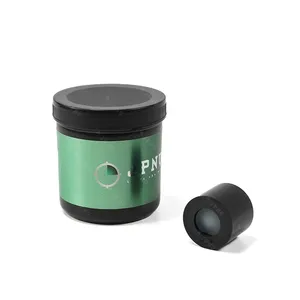Popular in your industry









































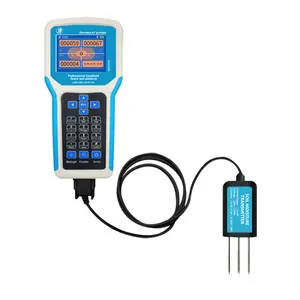























Related Searches:
















































































































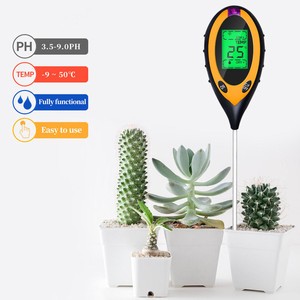
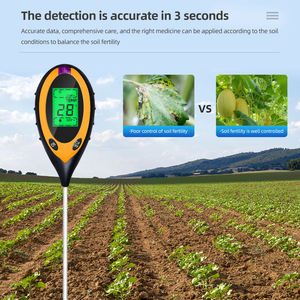
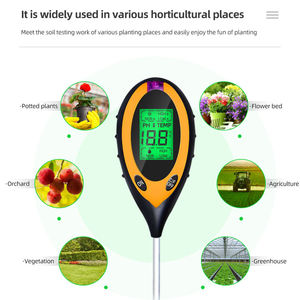
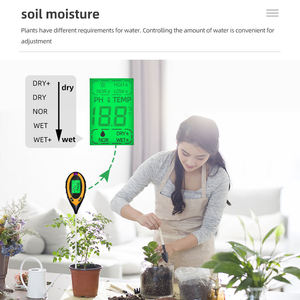
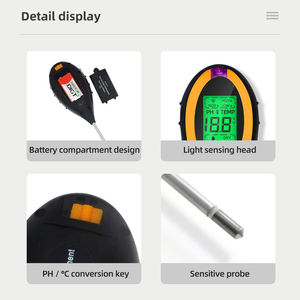
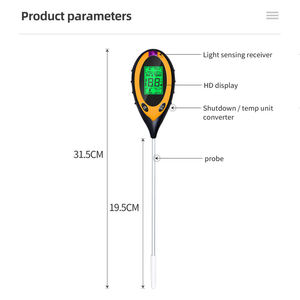


















About ph meter soil
Introduction
Soil health is a critical component of successful gardening and farming. A key determinant of soil health is its pH level, which significantly influences nutrient availability and, consequently, plant growth. This article offers an in-depth guide to mastering soil health, focusing on the use of pH meters. We explore the significance of soil pH, the various types of pH meters, their usage and calibration, interpretation of results, and adjusting soil pH based on these readings. We also highlight the importance of maintaining your pH meter for consistent and reliable results.
Understanding Soil Health
Soil health, also referred to as soil quality, is the soil's ability to sustain plant and animal productivity, maintain or enhance water and air quality, and support human health over an extended period. It's determined by the soil's biological, physical, and chemical characteristics that meet plant nutrient requirements. Healthy and fertile soil should have good structure and drainage, sufficient depth for root growth, adequate nutrient availability, minimal weed, insect pest, and plant pathogen populations, large populations of beneficial organisms, no toxins, and resilience to adverse conditions.
Importance of pH in Soil Health
Soil pH is a critical aspect of soil health. It measures the soil's acidity or alkalinity on a scale from 1 – 14. Most plants thrive between a pH of 4.5 and 8.0. The soil's pH is crucial as it determines the availability of nutrients to the roots. Nutrients like nitrogen, phosphorus, and potash dissolve in water or soil moisture, but they won't dissolve if the soil pH is too acidic or alkaline. A soil pH above 7.5 and below 5.0 can significantly affect your plants' nutrient uptake.
Introduction to pH Meters
pH meters are essential tools for measuring soil pH and maintaining optimal soil health.
Types of pH Meters
There are three types of pH level testing for soil health: colored dye soil pH testers, soil pH test strips, and electronic soil pH testers. Colored dye testers use dyes mixed with soil water to indicate pH levels. Soil pH test strips require soil, a clean cup or jar, water, and a pH test strip to provide a rough estimate of your soil’s pH. Electronic soil pH testers are devices that measure the soil's acidity or alkalinity through a probe inserted into the soil water. The pH can be read directly from the display.
How to Use a pH Meter
Using a pH meter for soil testing involves a few steps. For direct soil testing, make holes in the ground at different points, moisten them with distilled water, and insert your pH meter. For the slurry test, collect soil samples, add distilled water, stir, let it sit, stir again, and insert your pH meter. The pH value you read may not be 100% accurate, but it will give you a clear indication of your soil's pH level.
Calibrating Your pH Meter
Calibrating your pH meter is essential for accurate readings. Before calibration, condition your electrode by immersing it in electrode storage solution, pH 4 buffer, or tap water for at least 30 minutes. Calibrate your pH meter before each use or at least once every four hours. For one-point calibration, use a pH 7.0 buffer solution. Rinse the electrode with distilled water, dip it into the buffer solution, press the calibrate button, and wait for the meter to stabilize. Rinse the electrode again before testing your soil.
Interpreting pH Meter Results
Interpreting the results from your pH meter is crucial for understanding your soil's health. For instance, if you're using the slurry test method, the value you read on your pH meter won't be 100% accurate, but it will give you a clear indication of your soil's pH. If you're using the direct soil testing method, remember that you'll only be able to effectively test the soil as deep as your pH meter goes. For a more rudimentary method, the vinegar and baking soda test can indicate if your soil is acidic, alkaline, or neutral.
Adjusting Soil pH Based on Meter Readings
Adjusting soil pH is a gradual process that can be achieved by adding elemental sulfur, aluminum sulfate, or sulfuric acid. The choice of material depends on the speed of desired pH change and the type of plant. For example, to lower the pH from 7.4 to 5.5 for blueberries, apply 8 to 12 lb. of aluminum sulfate or 1 1/3 to 2 lb. of elemental sulfur per plant. If plants are already established, use a top-dress application and incorporate the amendment into the soil or water-in well. Monitor soil pH every three months to determine if additional applications are needed.
Maintaining Your pH Meter
Maintaining your pH meter is crucial for its longevity and accuracy. Regular calibration is essential, with the frequency depending on usage. Keeping the electrode clean extends its life, and it should be rinsed with distilled or deionised water between measurements. The electrode should be stored in a storage solution when not in use to maintain its sensitivity. Finally, electrodes should be replaced every 6-24 months depending on use. These steps ensure the ongoing performance of your pH meter.
Conclusion
Mastering soil health is a complex but rewarding endeavor. The pH level of your soil plays a significant role in the overall health and fertility of your garden or farm. By understanding the importance of soil pH and how to measure it using a pH meter, you can make informed decisions about soil amendments to optimize plant growth. Regular calibration and maintenance of your pH meter ensure its longevity and accuracy, providing you with reliable data to guide your soil health management strategies. Remember, soil health is a long-term commitment, and regular monitoring and adjustments based on pH meter readings can lead to a thriving and productive garden or farm.
